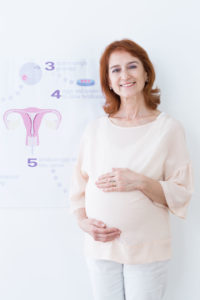 In recent years, the use of in vitro fertilization (IVF) has increased, as has research into how to optimize these and related procedures to enhance the likelihood of pregnancy and healthy births. A new study, published in the Journal of Assisted Reproduction and Genetics, sheds light on how maternal physical activity and sedentary behavior may impact pregnancy and birth outcomes.
In recent years, the use of in vitro fertilization (IVF) has increased, as has research into how to optimize these and related procedures to enhance the likelihood of pregnancy and healthy births. A new study, published in the Journal of Assisted Reproduction and Genetics, sheds light on how maternal physical activity and sedentary behavior may impact pregnancy and birth outcomes.
To evaluate whether levels of physical activity and sedentary behavior before or during IVF that involved controlled ovarian stimulation had any effect on pregnancy or related outcomes, researchers conducted a longitudinal study on 107 infertile women who were undergoing IVF treatment. For two weeks, physical activity and sedentary behavior were evaluated daily. Controlled ovarian stimulation was assessed based on the number of oocytes and embryos that were obtained, and successful IVF outcomes were considered as positive hCG, clinical pregnancy, and live births.
The researchers used accelerometry to measure physical activity and questionnaires relating to total screen time as an indicator of sedentary behavior. Physical activity was evaluated before the treatment began, at the time of implantation, immediately following embryo transfer, and after pregnancy tests that produced positive results.
The data collected in this study showed that during IVF treatment, women tended to significantly increase their sedentary behavior and decrease their physical activity. At the same time, higher levels of physical activity and lower levels of sedentary behavior prior to IVF was associated with better controlled ovarian stimulation outcomes – i.e. higher numbers of obtained oocytes and embryos.
Compared to those reporting low total screen time on days they did not work, those with high screen time on these nonworking days had 4.7 fewer oocytes and 2.8 fewer embryos from controlled ovarian stimulation. However, these behaviors before and during IVF did not appear to have any impact on implantation, pregnancy, or live birth outcomes.
These results suggest that being more physically active before undergoing IVF may improve aspects of controlled ovarian stimulation. More research is needed, however, to help researchers and physicians clarify the implications of exercise and sedentary behavior on fertility and on the success of IVF treatments.
Reference
Soritsa, D. et al. (2020). Maternal physical activity and sedentary behaviour before and during in vitro fertilization treatment: A longitudinal study exploring the associations with controlled ovarian stimulation and pregnancy outcomes. Journal of Assisted Reproduction and Genetics. doi: 10.1007/s10815-020-01864-w
